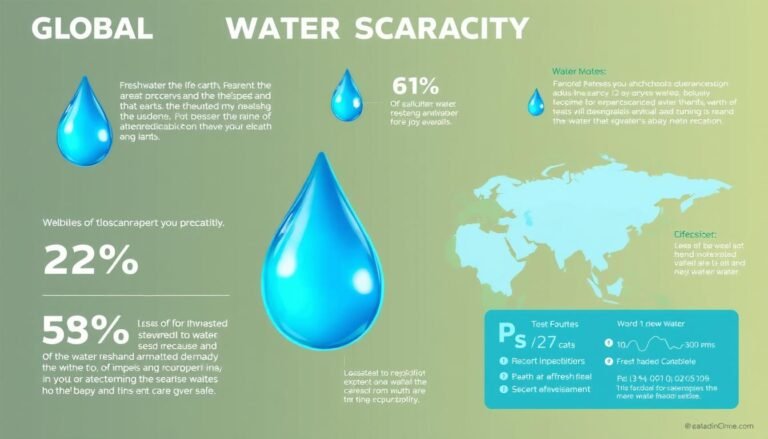Australia is at the forefront of adopting sustainable workplace practices, with many companies leading the way in reducing waste. As concern for the environment continues to grow, businesses are recognising the importance of implementing eco-friendly initiatives in their daily operations.
From reducing energy consumption to implementing recycling programs, Australian companies are taking proactive steps to minimise their environmental footprint. By adopting sustainable practices, businesses can not only contribute to a healthier environment but also improve their bottom line.
Key Takeaways
- Australian companies are embracing sustainable workplace practices.
- Reducing waste is a key focus for businesses.
- Eco-friendly initiatives are being implemented in daily operations.
- Sustainable practices can improve a company’s bottom line.
- Environmental sustainability is becoming a business priority.
The State of Sustainability in Australian Workplaces
As environmental awareness grows, Australian companies are adopting sustainable practices to reduce their ecological footprint. This shift is driven by a combination of factors, including consumer demand, regulatory pressures, and the pursuit of cost savings through efficiency.
Current Environmental Challenges Facing Australian Businesses
Australian businesses face numerous environmental challenges, from managing waste to reducing energy consumption. Eco-friendly office practices are becoming essential for companies looking to minimize their impact on the environment. These practices not only contribute to a healthier planet but also enhance a company’s reputation and appeal to environmentally conscious consumers.
The Growing Importance of Corporate Environmental Responsibility
Corporate environmental responsibility is no longer a nicety but a necessity. Companies are expected to take proactive steps to reduce their environmental impact. This includes implementing green business strategies that encompass everything from energy-efficient lighting to comprehensive recycling programs.
Key Waste Reduction Statistics in Australian Offices
Australian offices generate a significant amount of waste, with a substantial portion being recyclable. Statistics show that offices can reduce waste by up to 50% through effective recycling and waste management strategies. Implementing paperless systems and encouraging employees to adopt sustainable practices are key steps in this process.
By embracing sustainability, Australian businesses can not only reduce their environmental footprint but also improve their bottom line. As the importance of eco-friendly office practices continues to grow, companies that lead the way in sustainability are likely to reap the benefits of enhanced brand reputation and customer loyalty.
Understanding Eco Friendly Office Practices
Eco-friendly office practices are no longer a trend but a necessity for Australian companies aiming to reduce their environmental footprint. As businesses grow, their impact on the environment also increases, making it crucial to adopt sustainable practices.
Defining Sustainable Workplace Initiatives
Sustainable workplace initiatives refer to the strategies and practices implemented by organizations to minimize their environmental impact. These can range from simple actions like reducing energy consumption to more complex initiatives such as adopting renewable energy sources.
Some key sustainable workplace initiatives include:
- Implementing recycling programs
- Using eco-friendly office supplies
- Promoting sustainable transportation options for employees
The Triple Bottom Line: People, Planet, Profit
The triple bottom line (TBL) approach emphasizes the importance of considering not just economic (profit) but also social (people) and environmental (planet) factors in business decision-making. This holistic approach ensures that businesses are sustainable in the long term.
By focusing on TBL, companies can:
- Enhance their brand reputation
- Improve employee satisfaction and retention
- Reduce their environmental footprint
Measuring Environmental Impact in Office Settings
To effectively reduce their environmental impact, businesses need to measure their current footprint. This involves assessing various factors, including energy consumption, waste generation, and water usage.
Carbon Footprint Assessment
A carbon footprint assessment is a critical tool for understanding the amount of greenhouse gases emitted by a business. This assessment helps identify areas where emissions can be reduced.
Waste Audits and Benchmarking
Waste audits involve analyzing the types and amounts of waste generated by a business. Benchmarking this data against industry standards helps identify opportunities for improvement.

By understanding and implementing these eco-friendly office practices, Australian businesses can significantly reduce their environmental impact while also improving their bottom line.
Digital Transformation: Reducing Paper Waste
Digital transformation is revolutionizing the way Australian businesses operate, significantly reducing paper waste. By adopting digital solutions, companies can minimize their environmental footprint while enhancing operational efficiency.
Paperless Office Solutions for Australian Businesses
Implementing paperless office solutions is a crucial step towards reducing waste. This involves transitioning from traditional paper-based processes to digital documentation and communication.
- Digital filing systems
- Electronic communication platforms
- Online collaboration tools
Cloud-Based Document Management Systems
Cloud-based document management systems offer a secure and efficient way to store and manage documents. These systems enable easy access, sharing, and collaboration on documents from anywhere.
For more information on implementing green practices, refer to the eGreen manual, which provides comprehensive guidelines on sustainable office practices.
Digital Signature and Approval Processes
Digital signature and approval processes streamline workflows while reducing the need for physical paperwork. This not only saves time but also contributes to a more sustainable workplace.
Training Staff for Digital Transition
Training staff is essential for a successful digital transition. Providing employees with the necessary skills and knowledge ensures a smooth adaptation to new digital tools and processes.
By investing in staff training, businesses can maximize the benefits of their digital transformation initiatives.
Energy Efficiency Measures in Australian Offices
Energy efficiency is becoming a top priority for Australian businesses looking to minimize their operational costs and environmental impact. As the country continues to grapple with the challenges of climate change, companies are adopting innovative strategies to reduce their energy consumption.
Smart Building Technologies and Automation
One of the key approaches to enhancing energy efficiency is through the adoption of smart building technologies and automation. These systems enable offices to optimize their energy usage by automating lighting, heating, and cooling based on occupancy and external weather conditions. By integrating advanced sensors and IoT devices, businesses can significantly reduce waste and improve overall energy performance.

Renewable Energy Adoption and Green Power Agreements
Australian companies are increasingly turning to renewable energy sources to power their operations. Green Power Agreements allow businesses to purchase renewable energy directly from generators or through accredited GreenPower providers. This shift not only reduces reliance on fossil fuels but also contributes to the national renewable energy targets.
Energy-Efficient Office Equipment and Lighting
Upgrading to energy-efficient office equipment and lighting is another effective measure. LED lighting, for instance, consumes significantly less energy than traditional lighting methods and can be controlled through smart systems for optimal efficiency. Similarly, selecting energy-star rated office equipment reduces overall energy consumption.
NABERS and Green Star Ratings for Office Buildings
The NABERS rating system is a critical tool for measuring the energy efficiency of office buildings in Australia. It provides a benchmark for comparing the environmental performance of different buildings. Additionally, the Green Star rating system assesses the overall sustainability of buildings, including their energy efficiency, water usage, and indoor environmental quality. Achieving high ratings in these systems not only enhances a company’s reputation but also increases the value of the property.
By implementing these energy efficiency measures, Australian offices can significantly reduce their environmental footprint while also achieving cost savings. As the push for sustainability continues, adopting such practices will become increasingly important for businesses aiming to lead in their respective industries.
Waste Management and Recycling Programs
Implementing robust waste management and recycling programs is a significant step towards a sustainable workplace in Australia. As businesses continue to grow and expand, their environmental impact becomes a growing concern. Effective waste management not only reduces the environmental footprint but also contributes to cost savings and enhanced brand reputation.
Comprehensive Recycling Systems Beyond Paper and Plastic
While paper and plastic recycling are common practices, there’s a need to expand recycling efforts to include other materials. Offices can implement recycling systems for glass, metal, and organic waste. For instance, setting up designated bins for different types of waste and ensuring clear labeling can significantly improve recycling rates.
Composting Organic Waste in Office Kitchens
Composting organic waste is an effective way to reduce landfill waste and create a valuable resource for gardening and landscaping. Offices can install composting units or partner with local composting services to manage organic waste from kitchen scraps.
E-Waste Management Solutions
Electronic waste, or e-waste, poses a significant environmental challenge due to its toxic components. Businesses can implement e-waste recycling programs by partnering with certified e-waste recyclers. This not only helps in responsible disposal but also promotes a culture of sustainability among employees.
Single-Use Plastic Elimination Strategies
Single-use plastics are a major contributor to environmental pollution. To combat this, businesses can adopt several strategies:
- Replace plastic water bottles with refill stations.
- Use reusable alternatives for office supplies like pens, folders, and bags.
- Eliminate plastic cutlery and straws in office kitchens.
Reusable Alternatives for Office Supplies
Switching to reusable office supplies can significantly reduce waste. For example, using cloth towels instead of paper towels, and metal or bamboo pens instead of plastic ones.
Water Refill Stations and Bottle-Free Initiatives
Installing water refill stations encourages employees to use reusable water bottles, reducing the reliance on single-use plastic bottles. This initiative not only cuts down waste but also promotes a healthier workplace.
| Waste Reduction Strategy | Implementation Method | Environmental Impact |
|---|---|---|
| Comprehensive Recycling | Designated recycling bins | Reduces landfill waste |
| Composting Organic Waste | Composting units or services | Creates valuable compost |
| E-Waste Recycling | Partner with certified recyclers | Safely disposes of toxic waste |
By adopting these waste management and recycling programs, Australian businesses can significantly reduce their environmental impact, contributing to a more sustainable future. It’s a step towards creating a greener workplace that not only benefits the environment but also enhances the company’s reputation and bottom line.
Sustainable Procurement and Supply Chain Practices
Sustainable procurement is becoming a key strategy for companies in Australia looking to minimize waste and enhance their eco-friendly office practices. By adopting environmentally responsible procurement policies, businesses can significantly reduce their environmental impact while also promoting sustainable workplace Australia practices.
Eco-Friendly Office Supplies and Equipment
One of the simplest ways to start a sustainable procurement journey is by choosing eco-friendly office supplies and equipment. This includes opting for products made from recycled materials, selecting energy-efficient office equipment, and purchasing supplies from vendors who adhere to sustainable practices. For instance, choosing refillable pens over disposable ones or selecting paper products certified by organizations like the Forest Stewardship Council (FSC) can make a significant difference.
Sustainable Vendor Selection Criteria
When selecting vendors, Australian businesses should consider their sustainability credentials. This involves assessing the vendor’s environmental policies, their use of sustainable materials, and their commitment to reducing waste. By prioritizing vendors with strong sustainability track records, companies can ensure that their supply chain practices align with their eco-friendly goals.
Circular Economy Approaches in Australian Business
Adopting circular economy approaches is another critical aspect of sustainable procurement. This involves designing procurement processes that promote the reuse and recycling of materials, reducing waste, and encouraging suppliers to adopt similar practices. Australian businesses can benefit from exploring product-as-a-service models, where products are leased or rented rather than sold outright, thereby reducing the need for new raw materials.
Reducing Packaging Waste from Suppliers
Reducing packaging waste is a significant challenge for many Australian businesses. To address this, companies can work closely with their suppliers to minimize packaging or opt for suppliers that use biodegradable or recyclable packaging materials. Implementing a ‘take-back’ system for packaging materials is another effective strategy to reduce waste.
By implementing these sustainable procurement and supply chain practices, Australian businesses can not only reduce their environmental footprint but also contribute to a more sustainable future for their industry.
Australian Success Stories: Leading Companies in Sustainability
Leading Australian companies are showcasing innovative green strategies that not only reduce their environmental footprint but also enhance their operational efficiency. These eco-friendly office practices are setting new standards for corporate sustainability across the country.
Telstra’s Waste Reduction and Recycling Initiatives
Telstra, one of Australia’s largest telecommunications companies, has made significant strides in waste reduction and recycling. Their initiatives include:
- Implementing a comprehensive recycling program across all offices
- Reducing paper usage through digital documentation
- Partnering with suppliers who adhere to sustainable practices
Commonwealth Bank’s Sustainable Office Design
Commonwealth Bank has been at the forefront of sustainable office design, incorporating green building principles into their workspaces. Key features include:
- Energy-efficient lighting and HVAC systems
- Use of sustainable materials in construction
- Maximizing natural light to reduce energy consumption
Atlassian’s Carbon Neutral Commitment
Atlassian, a global software company with a significant presence in Australia, has committed to becoming carbon neutral. Their strategy involves:
- Investing in renewable energy projects
- Offsetting emissions through verified carbon credits
- Encouraging remote work to reduce commuting emissions
Small and Medium Enterprise Champions in Sustainability
Small and medium enterprises (SMEs) are also making significant contributions to sustainability. Examples include:
- Adopting energy-efficient practices
- Implementing waste reduction programs
- Engaging in sustainable procurement practices
Regional Business Success Stories
Regional businesses are not left behind in the sustainability journey. Companies in regional Australia are adopting green business strategies that are tailored to their local environments.
Industry-Specific Innovations
Different industries are innovating in unique ways. For instance, companies in the tech industry are developing software that helps other businesses track and reduce their environmental impact.
These Australian success stories demonstrate that businesses of all sizes and industries can contribute to a more sustainable future through eco-friendly office practices and green business strategies.
Government Initiatives and Support for Eco-Friendly Businesses
The Australian government is actively promoting eco-friendly business practices through various initiatives. This support is crucial for companies looking to adopt sustainable workplace practices and reduce their environmental footprint.
Federal Environmental Programs and Incentives
The federal government has introduced several programs to encourage businesses to adopt green practices. For instance, the Emissions Reduction Fund provides financial incentives for businesses that reduce their emissions.
State-Level Sustainability Grants and Resources
State governments also offer grants and resources to support eco-friendly businesses. For example, the New South Wales government provides funding through its Sustainability Advantage program.
Regulatory Frameworks Encouraging Corporate Sustainability
Australia has implemented regulatory frameworks to encourage corporate sustainability. The National Greenhouse and Energy Reporting Act requires large corporations to report their energy consumption and greenhouse gas emissions.
Tax Benefits for Green Business Practices
Businesses adopting green practices can also benefit from tax incentives. For example, the Small Business Technology Investment Boost provides tax benefits for investments in sustainable technologies.
| Initiative | Description | Benefit |
|---|---|---|
| Emissions Reduction Fund | Financial incentives for reducing emissions | Reduced energy costs |
| Sustainability Advantage | Funding for sustainable practices | Increased efficiency |
| National Greenhouse and Energy Reporting Act | Reporting framework for energy consumption and emissions | Improved transparency |
These government initiatives and support mechanisms are crucial for businesses looking to adopt sustainable practices. By leveraging these programs, companies can reduce their environmental impact while also improving their bottom line.
Practical Implementation: Starting Your Sustainability Journey
Embarking on a sustainability journey can seem daunting, but with a clear plan, Australian businesses can significantly reduce their environmental footprint. The key is to start with a thorough understanding of your current practices and identify areas for improvement.
Conducting an Office Environmental Audit
The first step towards a more sustainable workplace is conducting an environmental audit. This involves assessing your office’s energy consumption, waste management practices, and overall environmental impact. By understanding where you stand, you can set realistic goals for improvement.
Setting Achievable Sustainability Goals
Once you have a clear picture of your environmental footprint, it’s time to set achievable sustainability goals. These might include reducing energy consumption, minimizing waste, or implementing recycling programs. Ensure your goals are specific, measurable, and aligned with your company’s overall objectives.
Engaging Employees in Green Initiatives
Employee engagement is crucial for the success of any sustainability initiative. Educate your staff about the importance of eco-friendly practices and involve them in the decision-making process. This not only fosters a sense of ownership but also encourages a culture of sustainability within the organization.
Measuring and Celebrating Progress
To maintain momentum, it’s essential to measure and celebrate your progress. Key Performance Indicators (KPIs) for sustainability can help track advancements, while recognition and certification programs can motivate employees to continue their efforts.
KPIs might include metrics on energy consumption, waste reduction, and water usage. Regularly reviewing these indicators helps identify areas for further improvement.
Recognition and Certification Programs
Consider participating in recognized sustainability certification programs. These not only validate your efforts but also provide a framework for continuous improvement.
Conclusion: The Future of Eco-Friendly Workplaces in Australia
Australia is witnessing a significant shift towards eco-friendly office practices, driven by businesses adopting green business strategies. As seen in the success stories of leading companies like Telstra and Commonwealth Bank, embracing sustainability not only benefits the environment but also enhances corporate reputation and operational efficiency.
The Australian government’s initiatives, such as the Entrepreneur’s Programme and Green Business Solutions, provide valuable support for businesses transitioning to more sustainable practices. By leveraging these resources and adopting eco-friendly office practices, companies can significantly reduce their ecological footprint.
As the trend continues to grow, Australian businesses are poised to make a substantial impact on reducing waste and promoting sustainability. For more information on sustainable packaging solutions, visit Sustainable Works to explore how your business can contribute to a greener future.





